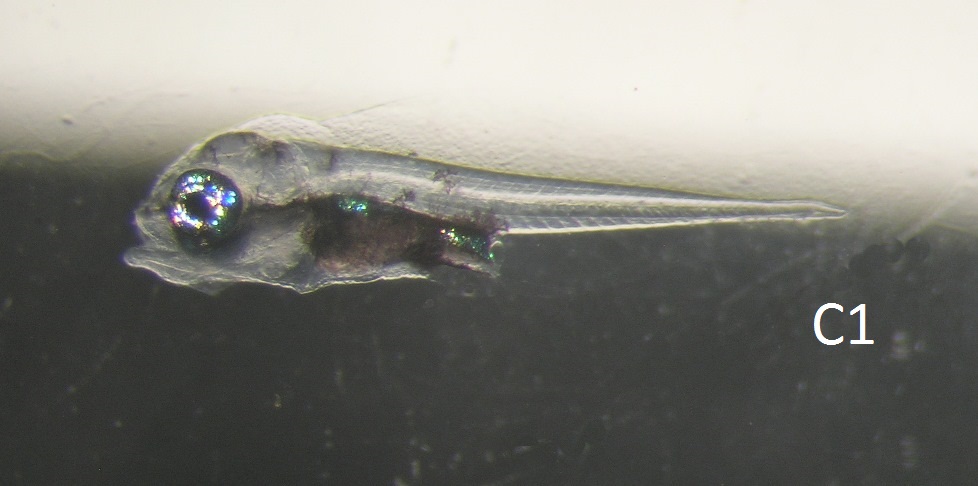


Monodactylidae: F III A2B
Monodactylus argenteus (Linnaeus, 1758).
Natal moony



Egg diameter in µm |
Number of oil globules |
Diameter of oil globule in µm |
Yolk texture |
Perivitelline space |
Position of oil globule at hatch |
Gut length at eye- pigment stage |
Myomeres |
910-1010 |
1 |
240-265 |
segmented |
narrow |
stern |
50% of NL |
24 |
Egg: This egg was recorded as slightly smaller than Monodactylus falciformis (FIIA9), and was originally mistaken for the egg of Dichistius multifasciatus (FIIIA2A) suggesting that it had far less white chromatophores on the yolk than M. falciformis. A second egg (A), collected in December 2013, provided the photo and upper range of egg and oil globule diameter in the above table. Originally catalogued as LIIB8; the larva barcode revealed the error.
Larva: The 2-day larva (B) has less scattered chromatophores in the finfold, which, along with the metallic blue sheen in the gut, may be clues to separating the two Monodactylus species at this stage. The metallic blue persisted in the 4-day larva (C & C1).
This egg was only recognised when a barcode was obtained from the above specimen, hatched from an egg collected in my inshore sample on 5 September 2010. Efforts will be made to barcode further specimens with the above features. Collecting in local estuaries suggests M. argenteus is less common than M. falciformis. The only adult M. argenteus I have barcoded was collected in the Pomene estuary in Mozambique (23°S). Of the 12 barcodes obtained from Monodactylus adults and eggs collected locally, 11 have proved to be M. falciformis (BOLD).